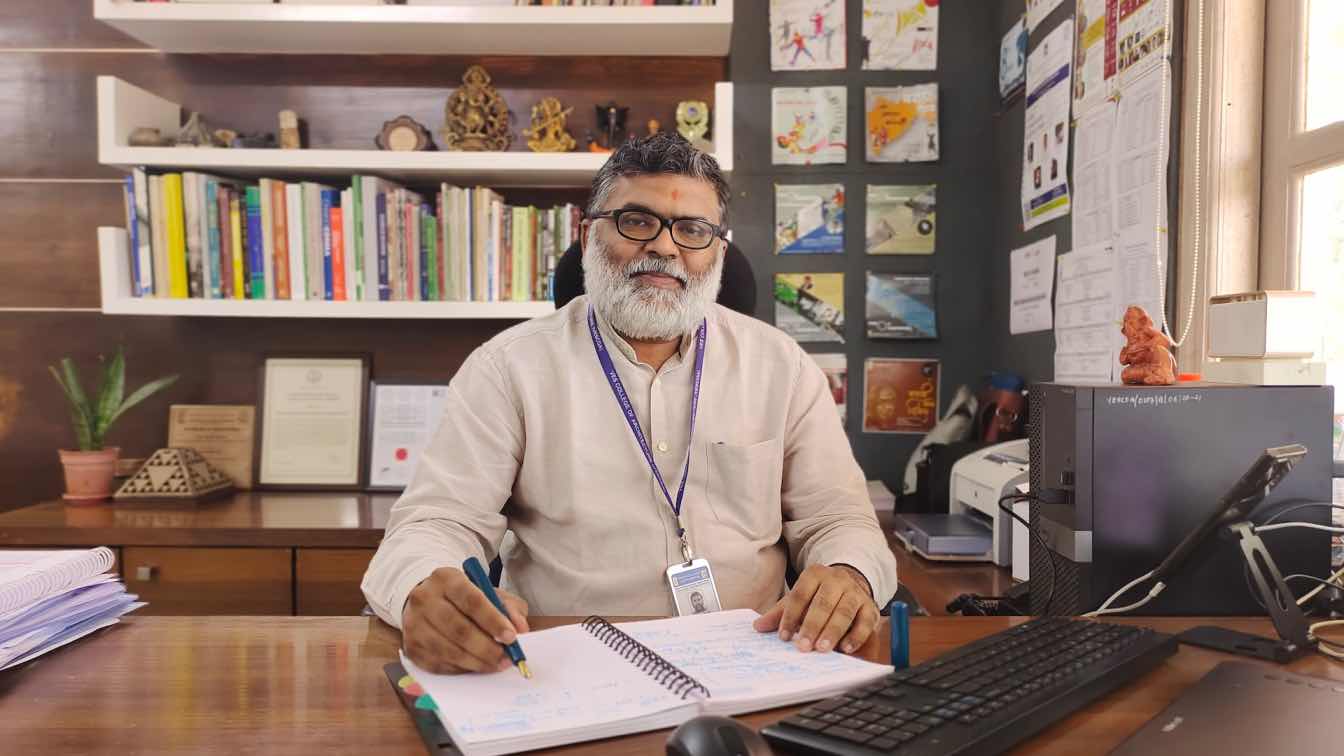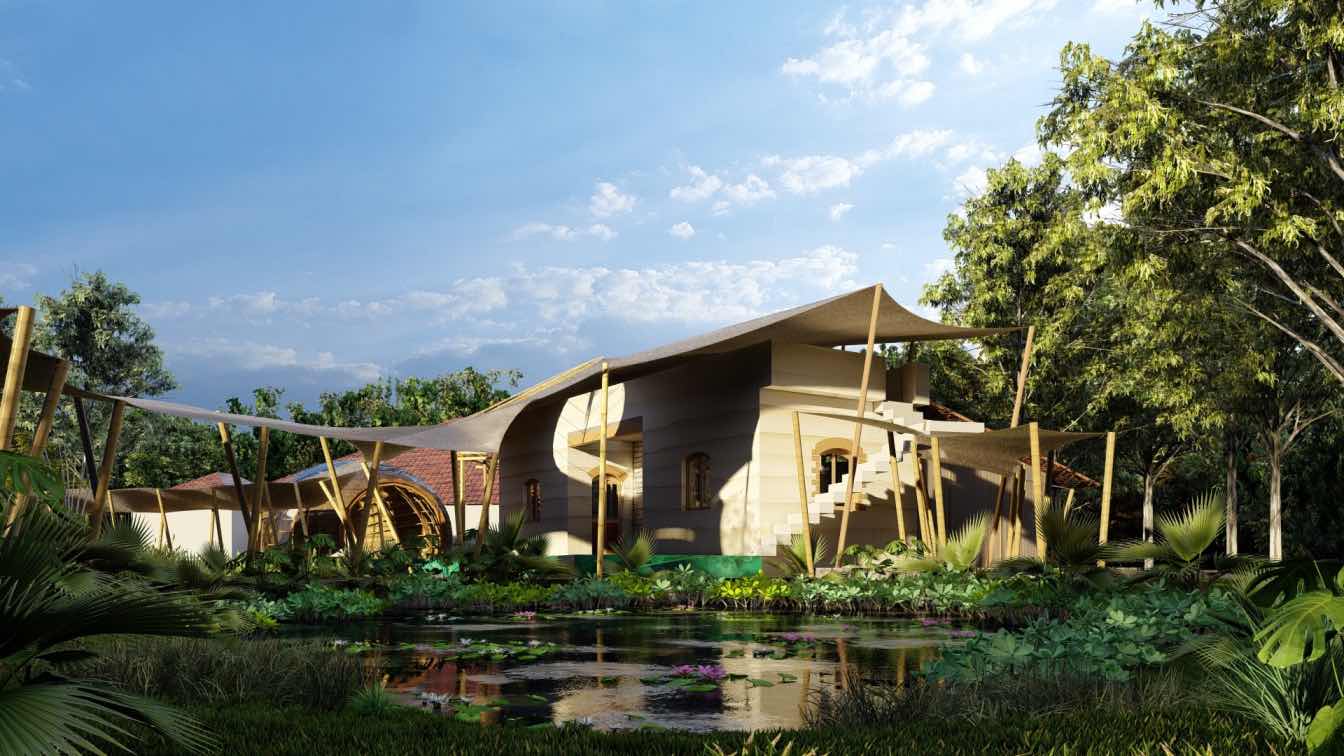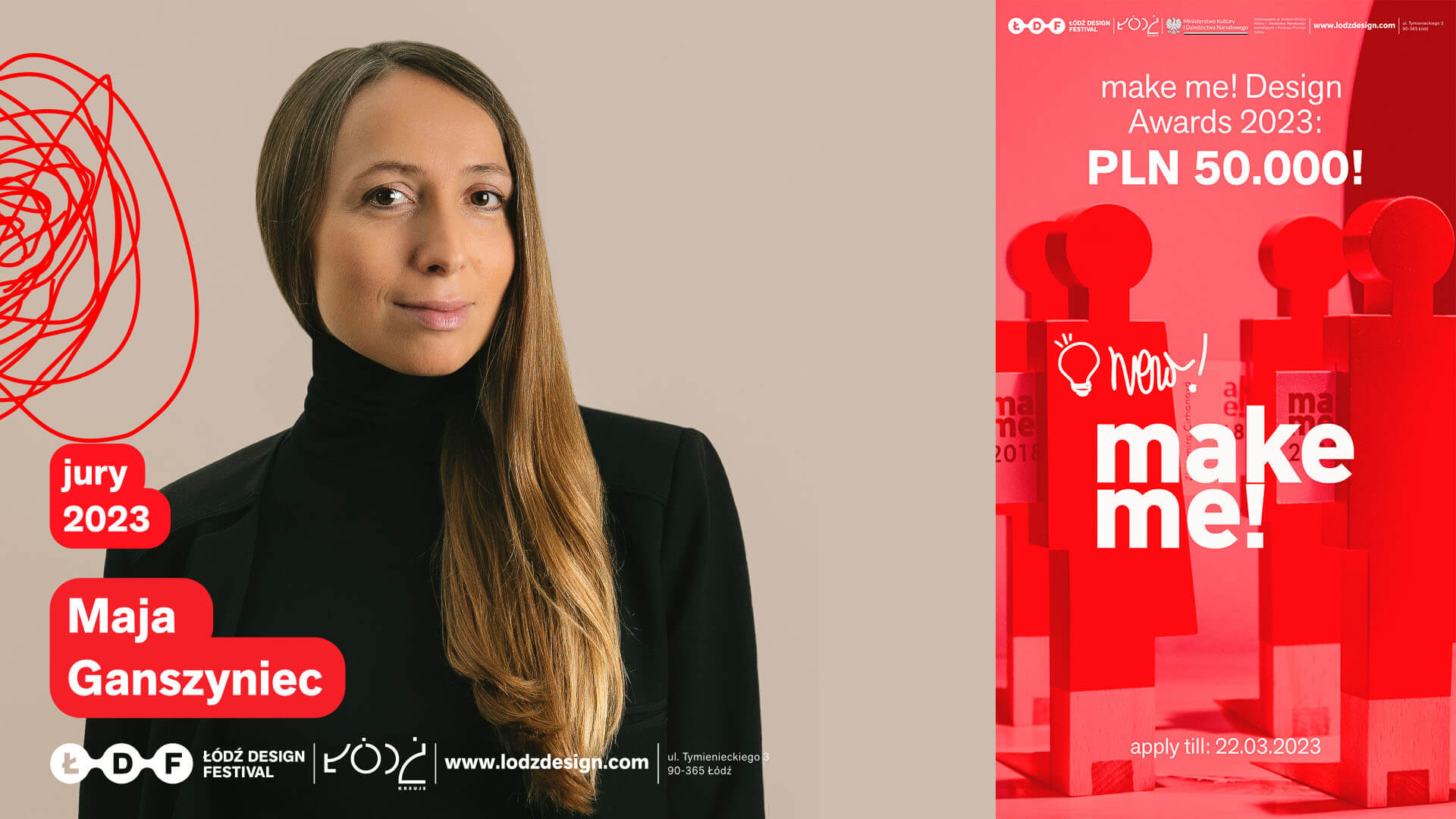1. Can you describe the unique approach or philosophy that guides architectural education at VESCOA?
At VESCOA, our primary aim is to sensitively guide students towards contributing to the development of a sustainable human habitat while excelling in their academic interests. Our mission is to instil in students not just technical proficiency but also essential values necessary for contemporary interdisciplinary practice and global engagement. We emphasize a comprehensive approach that provides learners with the necessary tools to navigate intricate challenges while upholding integrity and fostering creativity.
At Vivekanand Education Society’s College of Architecture, we are committed to instilling socio-cultural, environmental, and philosophical values combined with technical expertise, fostering an atmosphere of innovation, integration, and leadership. Our goals include fostering a culture rooted in value-based education, promoting research and knowledge dissemination, nurturing excellence, and professional advancement, fostering creative innovation, and enhancing awareness of students' pivotal role in designing for sustainability.
Anticipating the future, we envision a transformative shift towards interdisciplinary education, promoting collaboration with disciplines such as engineering, environmental science, and urban planning. Through these collaborations, we aim to comprehensively address the multifaceted challenges of the built environment, nurturing a holistic understanding of architecture that meets contemporary needs and aspirations. Our dedication is to prepare students not only as skilled architects but also as ethical leaders ready to make meaningful contributions to society.
2. What are the initiatives taken by VESCOA to foster innovation and creativity among both faculty and students within the architectural program?
To foster innovation and creativity among both faculty and students within the architectural program, VESCOA has implemented a multifaceted approach. Firstly, we prioritize collaborative efforts with artisans and industry professionals to provide holistic and enriching experiential learning opportunities. This involves initiatives that go beyond traditional classroom education, bridging the theoretical-practical gap to offer a comprehensive learning experience. Our strategy includes facilitating direct engagements such as site visits, market surveys, engaging exhibitions, insightful conferences, lab visits, and expert-led seminars.
Also, VESCOA fosters a conducive academic environment that encourages research activities and the integration of technology. Faculty members are actively encouraged to engage in research, with ample support provided for publishing scholarly work. Additionally, VESCOA promotes faculty development through participation in programs such as the Council of Architecture Training and Research Centre’s (COATRC) Program and occasionally conducts national-level COATRC sessions for the benefit of the architect community and academicians.
In addition to research and training opportunities, architectural study tours are integral aspects of our college curriculum. These tours provide students with invaluable experiential learning opportunities, allowing them to immerse themselves in diverse architectural landscapes and cultures. Thoughtfully chosen destinations such as Chandigarh, Ahmedabad, Ladakh, Auroville, and Kerala expose students to a diverse array of regional and national locations, encompassing a range of architectural styles, historical contexts, and contemporary design practices. During these tours, students not only observe cultural and modern iconic landmarks but also engage in interactive sessions with local architects and participate in hands-on workshops.
Through these experiences, students gain a deeper understanding of architectural ideologies and cultural influences, enriching their overall architectural education.
3. How do architecture and design programs prepare students for real-world challenges and professional practice?
The architecture and design programs at VESCOA are carefully designed to equip students with the skills and knowledge necessary to tackle real-world challenges and succeed in professional practice. Our approach emphasizes holistic experiential learning that extends beyond traditional classroom education. Central to this approach is integrated project-based learning, enhanced by hands-on workshops that actively engage students in practical experiences. These workshops complement semester-long projects, facilitating the integration of various subjects into students' designs while enhancing problem-solving abilities and fostering confidence in decision-making.
We also prioritize fostering critical thinking through engaging discussions and debates, which are crucial for nurturing student’s analytical skills essential for contributing to the development of a sustainable architectural landscape. Our assessments provide students with opportunities to identify weaknesses and areas for improvement, facilitating growth and performance enhancement.
Additionally, our encouragement of participation in competitions such as Solar Decathlon, Tiny House, and various National and International competitions serves to boost students’ confidence, increase creativity, foster innovation, and encourage collaboration. Engaging in these competitions exposes students to industry standards and current trends, nurturing ambition and preparing them to address future challenges.
In essence, VESCOA's architecture and design programs offer students practical skills, industry knowledge, and ethical values vital for success in the dynamic professional architectural landscape.
4. In what ways do you foresee collaborating with industry partners to enhance the practical learning experiences for students?
In development practical learning experiences for our students, VESCOA has established strategic partnerships with renowned organizations such as the Indian Space Research Organisation (ISRO) and the Associated Chambers of Commerce and Industry of India (ASSOCHAM). With 36 MOUs established to date, these collaborations offer invaluable opportunities for students and faculty to immerse themselves in real-world scenarios and engage with industry leaders. Leveraging ISRO's global recognition for scientific excellence and ASSOCHAM's pivotal role in fostering industry collaborations, our partnerships enhance the quality of practical learning experiences for students.
Our partnership with ISRO exposes students to cutting-edge technological expertise, enabling them to explore advanced methods that revolutionize design and construction processes. Simultaneously, our collaboration with ASSOCHAM facilitates access to internships and real-world projects, allowing students to gain firsthand experience with industry challenges.
Ultimately, these collaborations prepare students to excel in a competitive industry, equipping them with the skills, knowledge, and connections needed for success.
5. How do you perceive the impact of architecture on addressing societal and environmental challenges?
Architecture plays a crucial role in addressing societal and environmental challenges by prioritizing sustainability and adapting to the complexities of globalization. VESCOA's approach emphasizes creating sustainable and humane habitats, integrating humane, social, environmental, philosophical, and technological perspectives to address design challenges over ten semesters. As climate change approaches, students are prepared with alternatives for adaptation and mitigation. Climate-responsive design takes precedence, and students are sensitized to societal and economic differences, fostering empathy. Studio projects often tackle significant societal issues, preparing students for real-world challenges in their future practice.
A key focus is sustainability, deepening students understanding of eco-friendly, energy-efficient structures. They receive thorough training in sustainable materials, innovative technologies, and green certifications. The contemporary architectural landscape demands cost-effective and rapid material and technology choices, driving accessibility to eco-friendly alternatives and recycled materials. Passive design strategies, optimizing natural lighting, ventilation, and incorporating features like green roofs maximize energy efficiency and comfort.
In conclusion, equipping students with a comprehensive understanding of climate change, sustainability principles, and emerging technologies empowers future architects to devise solutions that effectively address societal needs while preserving the environment.
6. What opportunities does VES College of Architecture provide for students to engage with real-world architectural projects or internships?
VES College of Architecture (VESCOA) offers numerous opportunities for students to engage with real-world architectural projects and internships. Through strategic partnerships with various organizations, students have access to immersive experiences that bridge the gap between theory and practice. VESCOA's curriculum incorporates studio projects that address significant societal issues, preparing students for the challenges they will face in their professional careers. Additionally, the college facilitates internships with leading architectural firms, providing students with firsthand experience in the industry. These opportunities not only enhance students' practical skills but also cultivate their ability to apply architectural philosophy to real-world contexts, ensuring they are well-prepared for success in their future careers.





